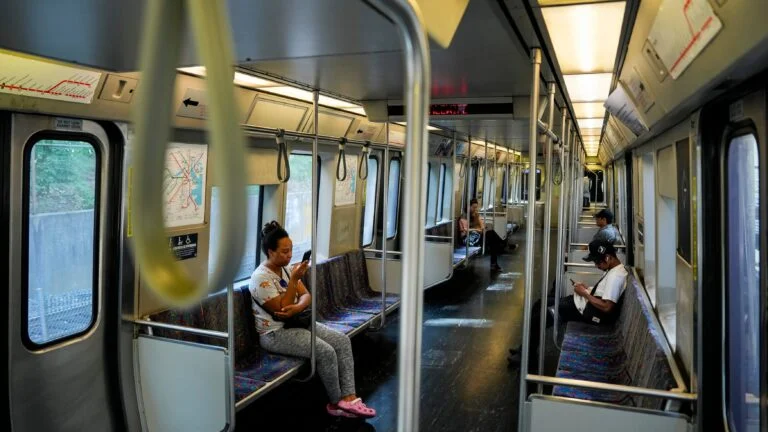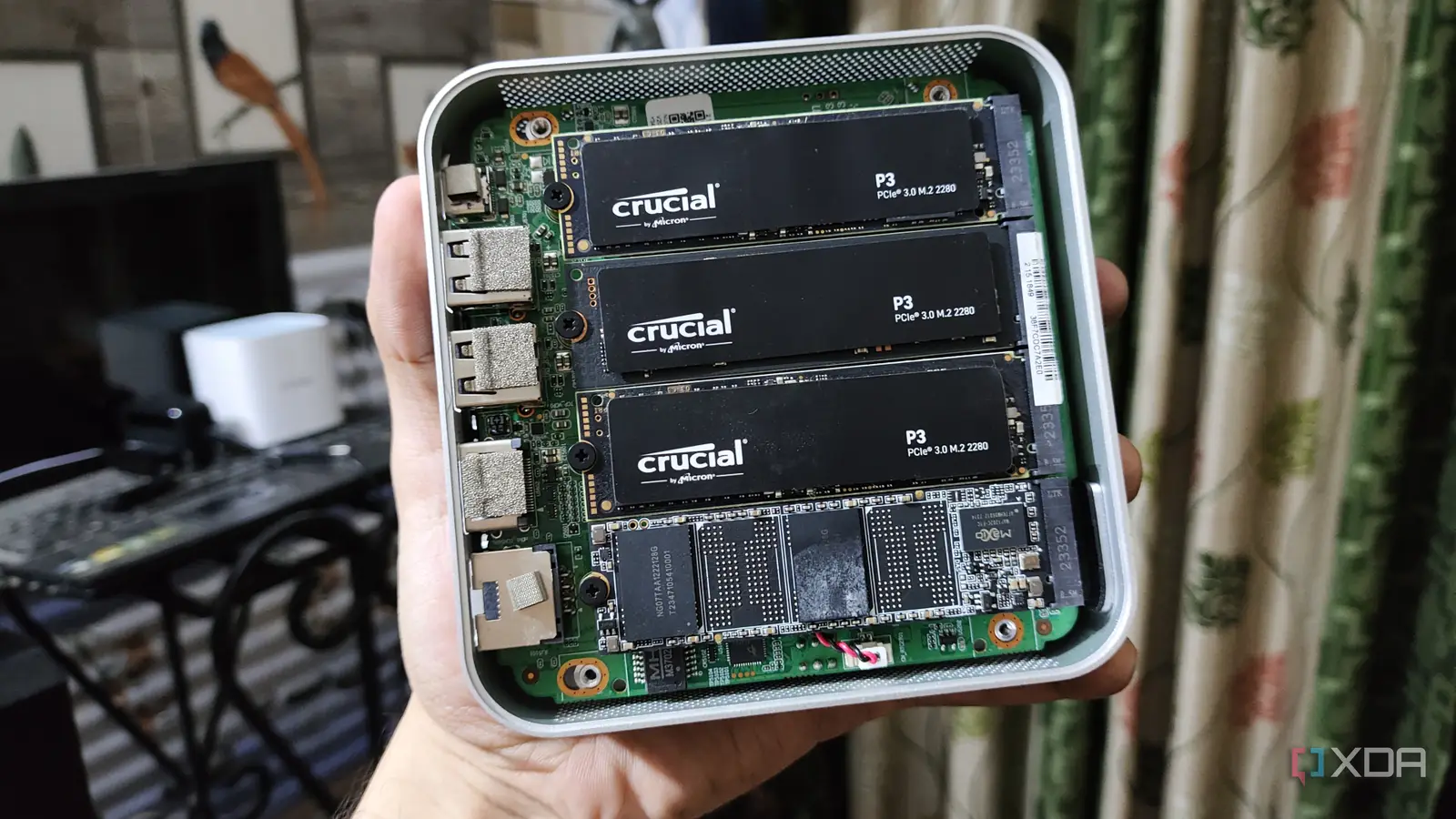Chinese electric cars are going global. A cut-throat price war at home could kill off many of its brands

By John Liu and Haicen Yang, CNN
(CNN) — In the spring of 2024, Li Hongxing, who runs a social media ad agency, took on a client he believed to be a rising star in China’s electric vehicle market.
A marketing veteran in the auto industry, Li went so far as to borrow to cover the cost of ads for Ji Yue, expecting payment later from the EV startup he thought had everything it needed to succeed: efficiency, growing sales, and deep-pocketed backers.
But it didn’t.
Within half a year, the carmaker collapsed, turning Li’s gamble into a nightmare, saddling him with debt of 40 million yuan ($5.6 million).
“It was a feeling of sheer despair,” Li said.
Ji Yue’s downfall is hardly unique in China’s auto industry, where hundreds of brands have gone under in a brutal race to the bottom over the past few years. The country’s EV boom not only gave rise to global leaders like BYD; it has also led to extensive overcapacity in which a crowd of carmakers are scrambling for market share.
The Chinese government has long dealt out subsidies and other support for EV makers – part of a strategy that helped catapult the country to its position as the largest EV market globally and spur growth in the world’s second-largest economy.
Relentless price wars have ensued, depleting profits and straining carmakers and suppliers. Even front-runners are squeezing parts makers to sell below cost, while extending payment terms for months, according to a dozen suppliers, carmakers, and industry experts who spoke to CNN.
It’s an example of what Chinese officials decry as “disorderly” competition – and it extends beyond the EV sector to other Chinese industries like solar panels, e-commerce and food delivery.
This all comes as EV brands including BYD, Chery, Geely and Changan have gone global, driving Chinese auto exports to nearly 6 million last year, more than any other country. But the flood of car exports has raised alarm abroad, prompting pushback like tariffs and restrictions from Europe, Mexico and Canada.
Hoping to stabilize an embattled economy weighed down by deflationary pressure – driven partly by these overcrowded sectors slashing prices – Beijing is trying to pacify the commercial battles royale.
In a Communist Party magazine article published this month, Chinese leader Xi Jinping called for “cracking down on chaotic, cut-throat price wars among companies.”
In recent months, Beijing has rolled out a series of measures to address the issue. Authorities have summoned auto leaders to warn them against initiating price wars, issued rules on shortening the payment cycle for the industry, and released guidelines urging local governments to scale back subsidies and eliminate overcapacity.
But economists and industry experts doubt the measures so far will deliver a quick fix, and there appears to be no easy way to eliminate excess capacity. For years, Beijing has fueled growth through investment and subsidies. Simply axing excess capacity and allowing an environment where only a handful of brands survive – even if now desirable to Beijing – could trigger sizable job losses and risk dragging further on economic growth, experts said.
“Those are definitely good starting steps, and that needs to happen,” Chetan Ahya, chief Asia economist at Morgan Stanley, said of the recent efforts. “But just cutting capacity will not be a perfect solution, there is going to be a social stability problem if you just decide to stop investing.”
Employment sits at the core of social stability – the cornerstone of Communist Party rule. And China’s auto manufacturing industry employs more than 4.8 million people, according to figures from earlier this year from CEIC, a data provider.
‘If not you, then them’
Ji Yue’s rapid rise and fall exemplified the brutal reality facing an industry plagued by excessive competition.
Founded in 2021 as a joint venture between Chinese internet champion Baidu and leading automaker Geely, the startup quickly drew market attention.
Li began supplying social media ads for Ji Yue in May last year. Impressed by his early dealings with the company, he felt confident enough to sign a long-term contract – even allowing extended payment terms to support the automaker.
By late October, however, he realized the firm might have run into liquidity issues. Weeks later, Ji Yue announced a restructuring to seek new capital amid “fierce market competition” – effectively marking the end of its brief life.
“For a large company backed by two major shareholders, with sales on the rise and several positive indicators in place, the fact that it could suddenly collapse was something I simply could not have anticipated,” Li said, adding that he has yet to receive repayment from the company.
CNN has reached out to Baidu and Geely for comment on the collapse of their joint venture.
China’s EV boom was born out of a huge bet that Beijing made on the then niche technology in the 2000s. By the early 2010s, the government declared it a strategic sector, showering it with the ample financial incentives that bred some of the world’s top EV makers like BYD, whose sales last year eclipsed Tesla’s. It also resulted in nearly 500 domestic auto brands at their peak around 2019.
The boom, however, soon became a bloodbath.
“With limited market growth, products becoming more and more alike, and more competitors crowding in, the competition just keeps getting tougher,” said Bo Yu, country manager for China at Jato Dynamics, an automotive market intelligence firm.
This has led China’s auto industry to undergo what some industry players called “knock-out rounds.” Today, more than 150 Chinese brands and over 50 EV makers continue to battle for survival, according to HSBC’s research.
“Some companies are bound to go under – if not you, then them,” Li said.
Vicious cycle
Many of the automakers and their suppliers still in the fight are biding their time to see who folds next.
“A lot of EV makers are actually running at a loss right now. Most of their money comes from industrial funds or social capital, and they just keep raising new rounds to cover those losses,” said Shen Hong, an economics researcher at a Peking University think tank that advises the government.
The average profit margins of China’s automotive companies plummeted to 4.3% last year, from nearly 8% in 2017, data from the China Passenger Car Association showed. All the while, the utilization rate of its manufacturing capacity continues to stand at around 50%, according to Morningstar, a financial services and research firm.
Years of price wars have trapped the industry in a vicious cycle with squeezed margins, declining quality and a supply chain plagued with payment delays, according to the dozen industry players and experts. Many of the carmakers and suppliers declined to be named because of the sensitivity of the matter.
One consequence of the cut-throat competition is that automakers have made cost-cutting and efficiency the core of their operations, instead of focusing on innovation, said Carl Cheng, an insurance manager for an EV maker. Suppliers told CNN that auto brands would often request suppliers to deliver at least 10% discounts on their prices every year.
“Suppliers have little choice but to quietly accept unfavorable terms,” Cheng said. “If you walk away, there are plenty of others ready to step in.”
The overall quality of components of cars has undeniably declined, he added.
In one extreme case, a coating materials supplier based in the central city of Wuhan said they were forced to lower prices by more than 40% just to stay in the game.
“If you can’t cut costs anywhere else, what’s left? You cut wages. You bring in temporary workers, push overtime, squeeze out more efficiency – that’s basically all you can do,” the person said, adding that they had to cut workers’ pay by around 30%.
Even after offering hefty discounts, suppliers face long waits to get paid. Many major Chinese carmakers employ supply chain financing that results in extended payment cycles, shifting financial risk onto partners, suppliers told CNN .
The specter of ‘involution’
In recognition of the potential drag on economic growth, China has stepped up policy efforts, declaring an “anti-involution” campaign. “Involution,” or “neijuan” in Chinese, is an anthropological term that has come to describe excessive, self-defeating competition yielding little to no progress in the country.
China’s top automotive regulator, the Ministry of Industry and Information Technology, in May vowed to curb “involution-style” competition in the auto sector, saying it undermines sustained investment in research and development, and erodes product quality and performance.
In July, China’s top economic policymaking body, the Central and Financial Affairs Commission, chaired by Xi, made the “governing of disorderly low-price competition” a policy focus.
And to ease the payment pain for suppliers, Beijing has issued rules forcing carmakers to pay up within 60 days.
But industry players and experts are skeptical that the measures so far announced would be enough.
For example, on the payment deadlines, the reality is that carmakers can still lean on the use of promissory notes, as many of them already do, experts said.
“Compared with before, I don’t think the current price war has eased much at all,” Cheng said. “The reality is that newly launched models with lower prices draw in plenty of orders… at the end of the day automakers have to focus on survival.”
Price competition could also exist in other forms, although increasing government scrutiny may restrain carmakers from making material price cuts, said Claire Yuan, a director and lead analyst focusing on China’s auto industry at ratings agency S&P Global.
“With affordability key to gaining market share, they could still engage in stealth competition, such as launching new models at lower price ranges or upgrading existing models while keeping prices unchanged or offering other benefits,” she said.
Vincent Sun, senior equity analyst at Morningstar covering China’s auto sector, also believes price competition will likely remain in the short term.
“It may take a while, or more efforts than just anti-involution to solve this issue,” he said.
For now, experts expect the price wars to continue until most brands go the way of Ji Yue, leaving only a handful standing.
“When it comes to price wars, it’s just not very realistic to think they can be completely curbed through administrative measures,” said Shen, the researcher.
Ahya of Morgan Stanley said tackling oversupply in sectors like EVs would be more difficult given the larger presence of private enterprises compared with state-owned ones, making consolidation more complex. Structural reforms are needed to fundamentally address overcapacity, he added.
On a Chinese podcast in late August, He Xiaopeng, founder and CEO of one of the leading EV makers in China, Xpeng, said no Chinese carmaker is out of the woods yet.
“I think the knock-out rounds in China’s auto industry will go on for another five years,” he said.
“There will likely be only five of them left.”



